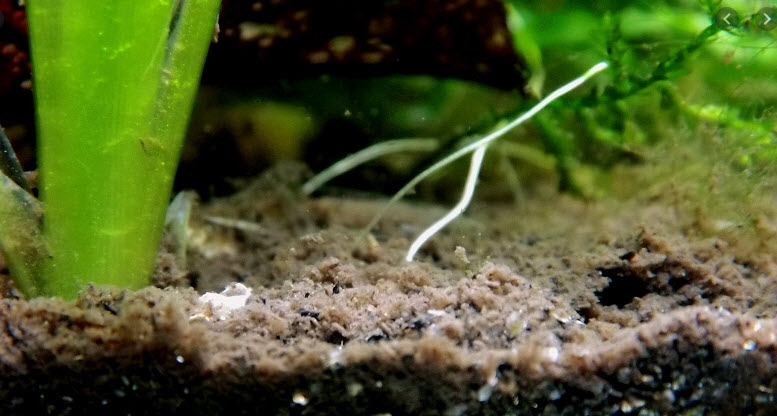
The Science of “Detritus”
In the eyes of most hobbyists “detritus” is any “brown gunk” in an aquarium. Other words used to describe this material is mulm, organic matter, sludge and debris.
The subject of biofiltration in an aquarium is very dependent on the subject of “detritus”. In biology, detritus is particulate organic material, normally considered “dead” but actually teeming with microscopic life.
Note that you will come across very authoritative-sounding information trying to define mulm and detritus as two different things, “mulm” being “alive” and “detritus” being “dead”. In fact there is no such thing as “dead” brown gunk in an aquarium. It is ALL alive to a much greater extent than realized.
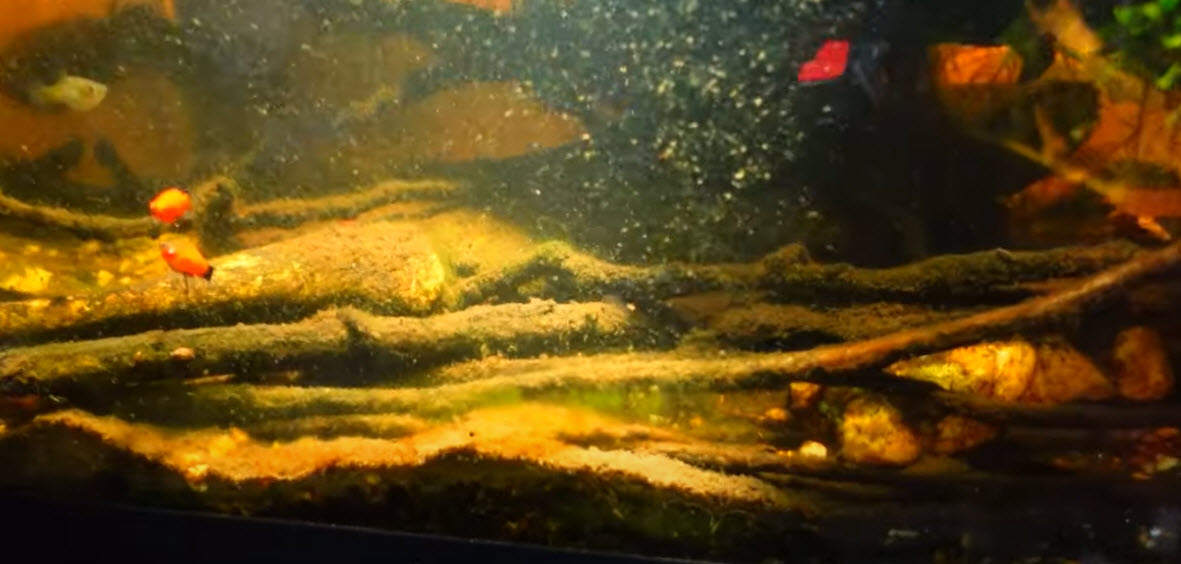
In the aquarium there are many types of detritus:
- “Bad”, undesirable detritus
- brown scum on the surface of the mechanical filter (largely feces)
- brown mulm above the substrate which contacts the fish
- Benign detritus
- “brown gunk” in the interstices of the substrate where there is NOT decent water flow.
- sometimes brown mulm above the substrate where the fish do not contact it
- Desirable Detritus
- “brown gunk” in the interstices of the biomedia in the filter where there IS decent water flow.
- sometimes brown mulm above the substrate where the fish do not contact it
In general, detritus which doesn’t contact the fish is beneficial, acting to oxidize dissolved organic compounds and ammonia to relatively harmless gases and nitrate with a whole host of living organisms.
But because detritus has bacteria in it, detritus which contacts fish is generally detrimental. The bacteria require the fish to give a sizable portion of its immune system over to fighting the bacteria, even if that bacteria is harmless. This leaves less immune system for fighting off pathogens.
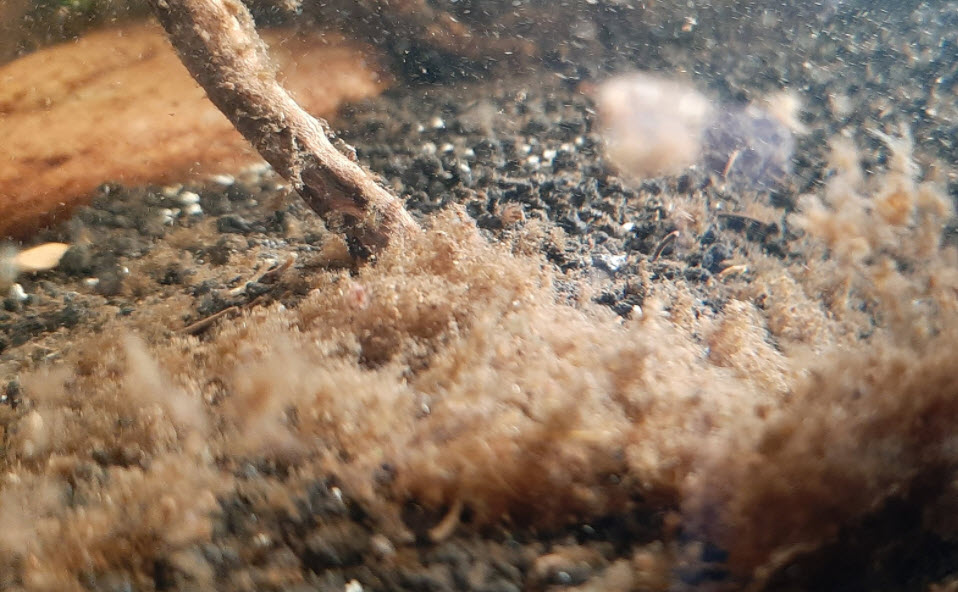
Brown Mulm Above the Substrate
Some tanks get a floating cloud of brown material exiting in clumps just above the substrate. It is called “mulm”. This mulm is only of concern if one has bottom feeders like corydoras or bottom swimmers like goldfish.
This mulm contains a lot of bacteria. The bacteria will create big health problems with the likes of corydoras and clown loaches. Loaches swimming through mulm CAN get columnaris/epistylis and corydoras swimming through mulm CAN lose their whiskers to bacteria. This whisker loss is often incorrectly blamed on “sharp substrate”.
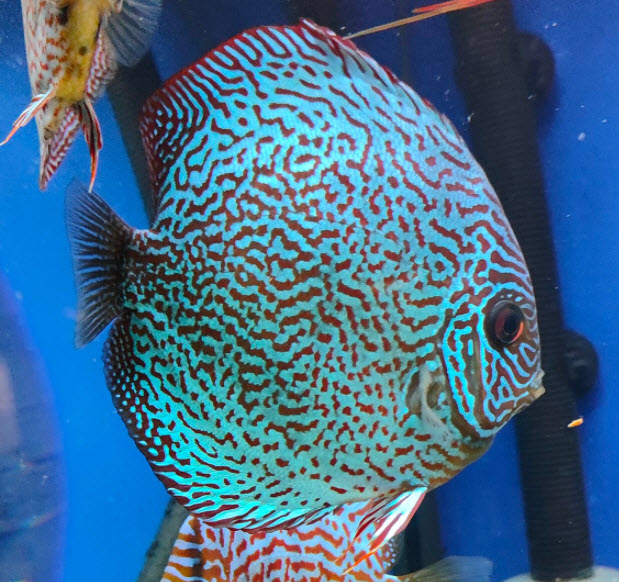
Mulm generally has several causes:
- The aquarium is being over fed
- The food has a low protein content (less than 45%)
- The aquarium is over stocked
- The aquarium has poor water circulation
- The aquarium has poor aeration
Most of the time a combination of several of these things is present.
The food variable is probably the most common cause of too much mulm. Fish do not need much in the way of food. They only need 1% to 2% of their body weight in dry fish food. This is typically the volume of two eyeballs per fish per day.
Do not feed more than the fish can consume in one minute once per day.
Note that if one has a breeding tank with small fry in the tank this mulm CAN becomes desirable. Fry do best with a constant source of food. The mulm produces small organisms the fry can eat (infusoria). The fry seem to be immune to the bacteria in the mulm.
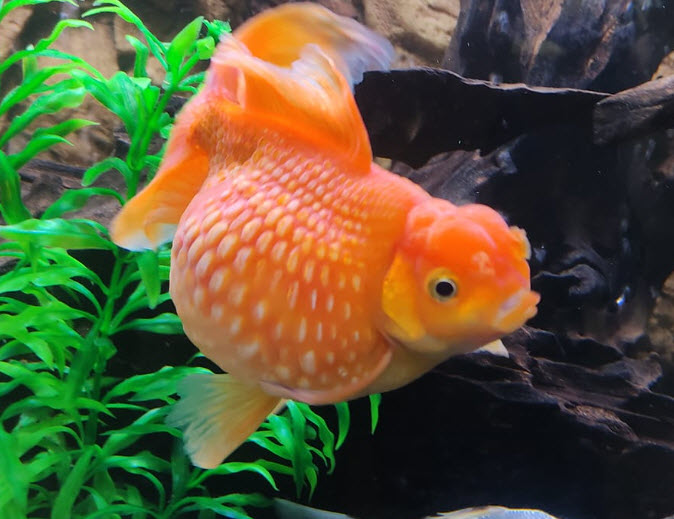
Aquaculture operations which have very heavy stocking of fish in a pond need to remove the mulm on the bottom of the pond at least once a year. The brown mulm will start giving the fish all sorts of health problems. But what about farm ponds? Farm ponds have a light stocking of fish and a heavy brown mulm on the bottom. This mulm is healthy and doesn’t harm the fish. Indeed it is where most of the beneficial bacteria reside in a pond.
Some hobbyists have lightly stocked, unfiltered aquariums with heavy mulm accumulations (one form of the “natural” aquarium). The mulm acts like a filter. These lightly stocked well aerated aquariums can have healthy fish. It just all depends on stocking and aeration. Note that every “natural” aquarium I’ve ever seen with heavy mulm … well … how do I say this …. looks like crap to me. There are invariably small particles of mulm floating around the tanks which I dislike intensely. And I just don’t like the “dirty look”. But to some this is beautiful. “To each his own”.
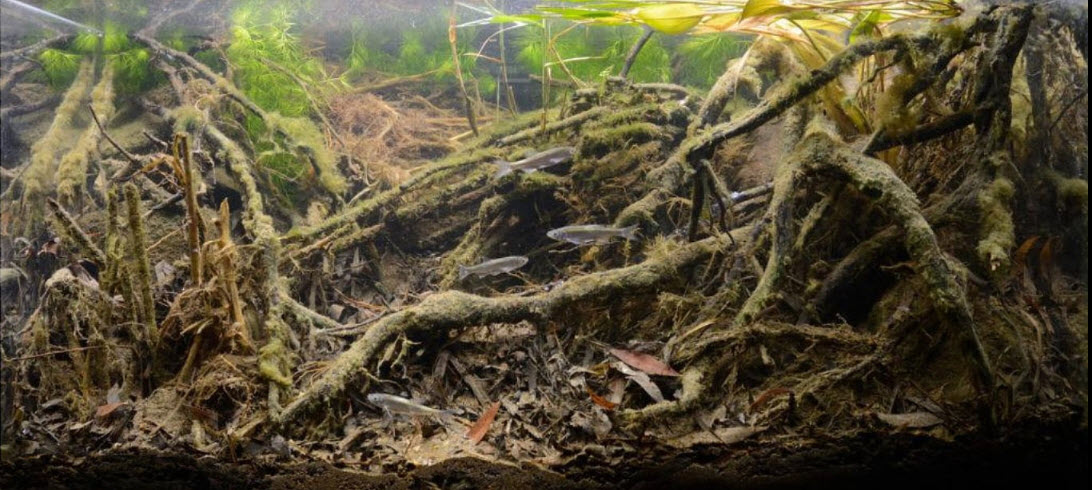
Many vacuum feces and mulm detritus from the surface of the substrate every week. This is a good idea. Just don’t vacuum into the substrate. Just skim the surface. Note I’m too lazy to do this. I’ve set up my aquariums so I don’t get mulm above the substate. This is due to my use of undergravel filters.
Getting Good Circulation
Mulm is reduced by good water circulation. If one has poor water circulation one can optimize the circulation by adding two small bladed circulation pumps (“wavemakers” or “powerheads”) per aquarium. Add one pump at the upper back side of the aquarium. Aim this at the surface in such a way as to maximize the choppy water surface area in order to maximize aeration (this is typically about 30 degrees upward).
Then add, at the side opposite the first pump, a bladed circulation pump at the back at a middle height, aimed at 30 degree downward angle to the middle front of the aquarium. This pump keeps the front substrate free of feces without being too obtrusive. These two pumps give a good circular flow in the aquarium.
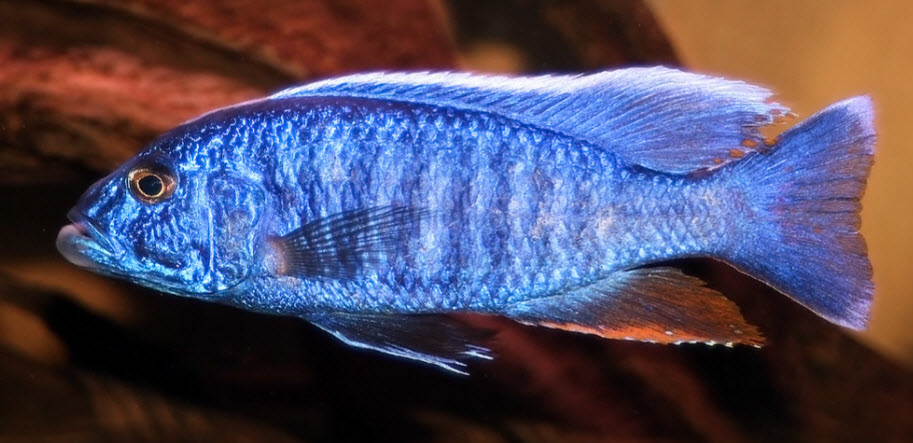
Getting Good Aeration
Mulm is also reduced or eliminated by aeration. There are TWO good ways to aerate any aquarium. Either a “choppy’ surface OR air stones.
- Aeration at the surface of an aquarium is a matter of getting a surface that is full of choppy waves. These choppy waves are “turbulent” flow, which aerates the water many times better than smooth or “lamellar” flow. Choppy surface water can be from a fan bladed circulation pump (a “wavemaker”) aimed at the surface or from the outlet of a filter pump positioned just below the surface and aimed at the surface.
- Air bubbles rising from an airstone through the water ALSO do a great job of creating turbulent flow air/water interface, contrary to popular myth. They do need a decent sized air pump in order to do a good job. One wants a LOT of bubbles.
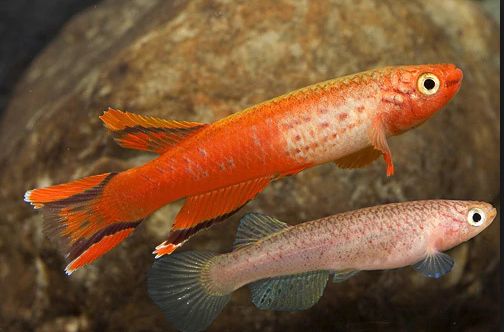
Brown Scum on the Surface of the Mechanical Filter
The brown scum on the surface of a mechanical filter is largely fish feces and uneaten food. This brown scum is normally cleaned off once a week (or the filter media is changed out). This brown scum is actually much more benign than many think. It only contributes a small amount to the pollution in the tank, typically ten to twenty percent of the nitrate is from the mechanical filtration scum.
All the author’s aquariums (18 last count) had no mechanical filtration (and a huge amount of biofiltration) and did just fine. If one has a limited amount of biofiltration (like a hang on back or a sponge filter) this detritus becomes more detrimental and needs to be cleaned regularly.
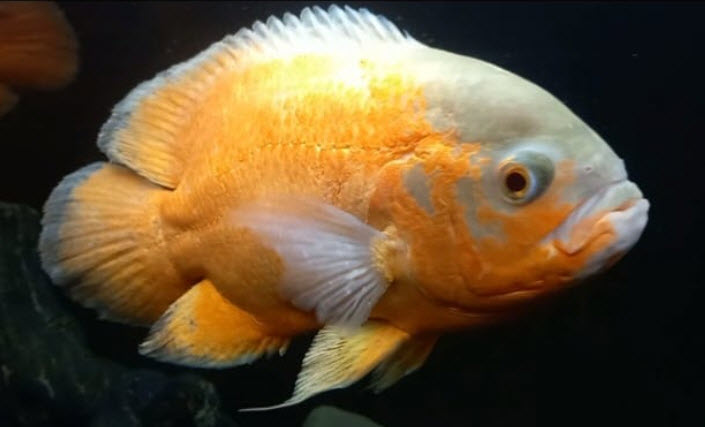
“Brown Gunk” in the Interstices of the Substrate
This brown gunk is relatively benign and has some slight positive benefit. It can be removed by deep vacuuming every month or so (unless it is an under-gravel filter) but it really isn’t necessary. Because the flow is very slow in the substrate this brown gunk does NOT do any significant biofiltration, contrary to popular mythology. It also does NOT go anaerobic and produce poisonous gas. It also does not decompose rapidly and release heavy spikes of ammonia, nitrite or nitrate. It is not a “nitrate factory”. Most of the time it basically just sits there, SLOWLY processing and decomposing dissolved organic compounds and ammonia into carbon dioxide and nitrate.
But like all things there can be instances where this changes. If a beginner puts four large Oscars in a fifty gallon aquarium and feeds them “what they can consume in five minutes three times a day” because that is what the directions on the fish food box say, one can have a problem in any substrate. The brown gunk in the substrate can go hypoxic and release bacterial toxins. The toxins stress out and irritate the fish.
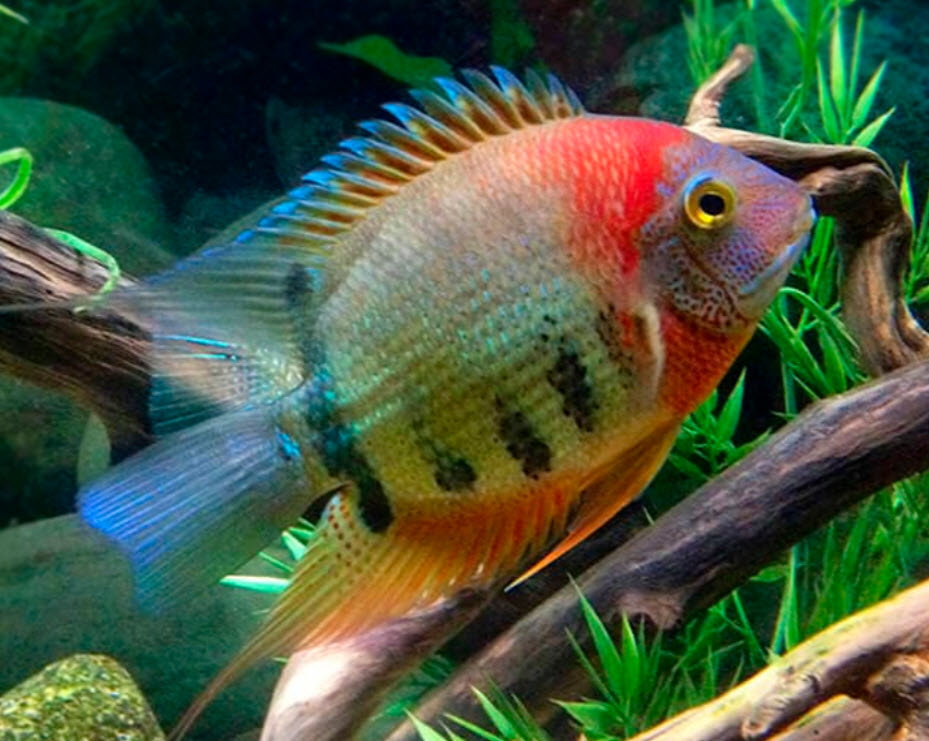
“Brown Gunk” in the Interstices of the Filter Media
This is the “good” detritus. It is essential for removal of ammonia. What is missed is that this brown gunk is even more important for keeping bacteria in the water column at bay.
Cloudy water and/or ammonia spikes have the same root cause. The root cause is that the filter doesn’t have enough dirty slimy brown “gunk” in it. The brown “gunk” in a filter is a biofilm of beneficial bacteria. This brown “gunk” is what you find in the media in filters. It takes many months to form. “Beneficial bacteria ain’t pretty”.
There are at least three reasons for ammonia spikes or cloudy water:
- The filter is less than 3 months old and hasn’t had time to form a large amount of brown “gunk”, i.e. beneficial bacteria
- The filter is a hang-on-back with insufficient surface area to form a lot of “brown gunk”, i.e. beneficial bacteria
- In our “cleanliness is next to godliness” world, everyone keeps cleaning away this “brown gunk” because it’s “obviously fish poop”. And they are cleaning away their beneficial bacteria.
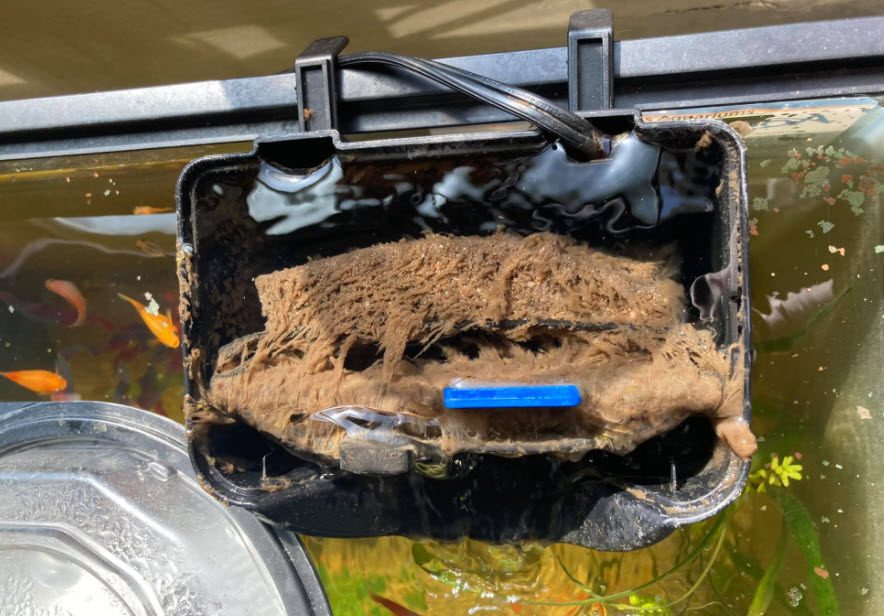
This concept that beneficial bacteria are in the brown gunk in filters has its basis in several factors:
- Diana Walstad goes into how beneficial bacteria work in her book “The Ecology of the Planted Aquarium”. She talks extensively about how the biofilms build up with a huge number of references.
- When starting an aquarium everyone agrees that the best “seed” is to squeeze a dirty existing sponge filter into some water. The resulting brown soup can give a cycled tank in days. So obviously this is where the beneficial bacteria are.
- K1 fluidized beds work great at keeping water crystal-clear and minimizing ammonia and nitrite readings. They only do that when they have been cycling for two to four months and build up a brown filmy mass inside the K1 media. This filmy brown gunk is where the beneficial bacteria reside.
- Frequent complaints on social media say things like “My ammonia spiked” or “my water is cloudy”. Ask a simple question “Did you just clean or change your filter?”. And easily 75% of the time the answer is yes. This is just one of the most common mistakes people make.
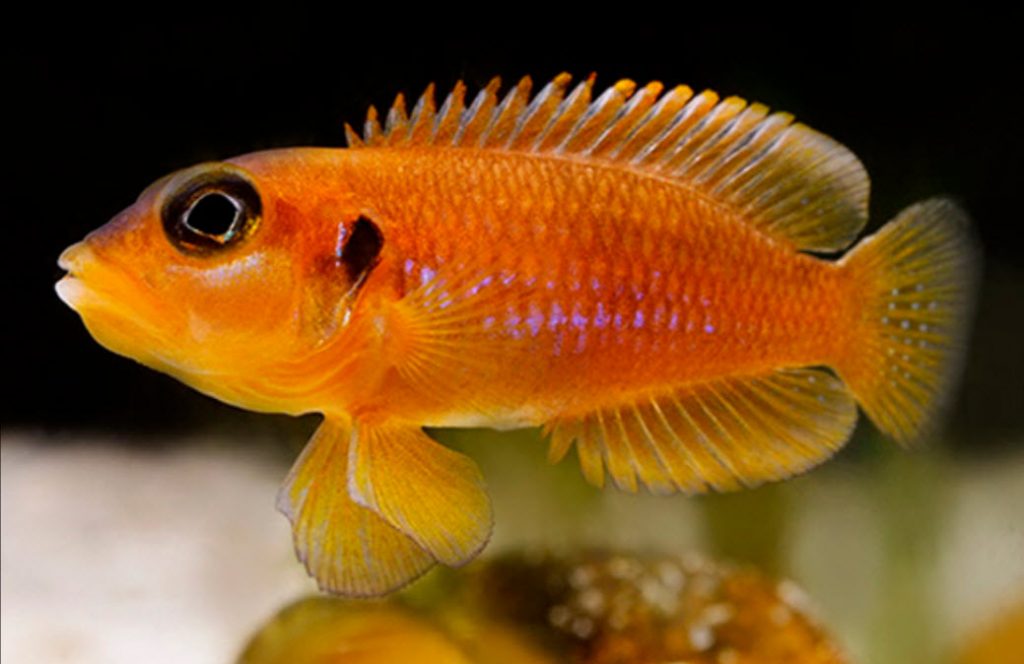
From the Poret Foam Supplier (Swiss Tropicals)
“The brown filter sludge in a filter is for the most part alive and not simply waste. Removing this mud does more harm than good. The purpose of the filter media is not to filter out particles from the water as is often assumed. The media serves as the habitat for a vast array of microorganisms that include bacteria, archaea, worms, ciliates, flagellates, and many others. These microorganisms live in a community that is based on biofilms. The biofilms are created by bacteria that secret extracellular polymeric substance (EPS), which is often called “slime”. The community forms a bioreactor that processes the waste and turns it into food and energy for its members, and ultimately into organic or inorganic products that are then used by plants, evaporate, or removed by water changes. It takes a considerable amount of time to establish this “filter community”; consequently, it is very important not to disturb it unless absolutely necessary.”
This is probably the best write-up from an aquarium product supplier on any subject. It is 100% correct. The organisms in brown “gunk” eat dissolved organic compounds, bacteria, fish pathogens like ich trophonts and each other in a complex web. It is a miniature sewage treatment plant and it works very well if it is just left alone to do its thing.
This brown filter “gunk” has another benefit. If one gets some ich in the tank this “brown gunk” develops a host of tiny organisms which literally eat the infectious stage of the ich, the trophont. In this manner the ich breakout is controlled and the fish survive. If one does not have a mature filter, ich can rapidly kill fish.
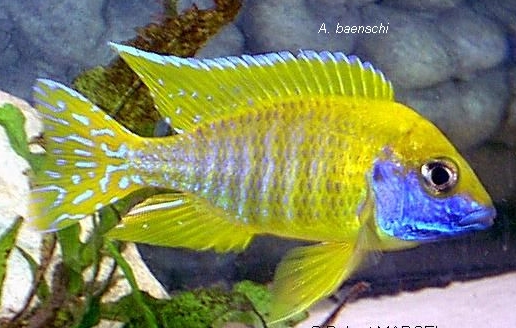
The Science of Filtration in Depth
There are some aquarium hobbyists who are interested in delving deep into the science and the calculations behind all aspects of filtration and detritus. For those who are so inclined the following is pertinent:
6.2. Biofiltration
6.2.2. Brown Gunk in the Filter
6.2.3. Cloudy Water
Then there is the science behind cycling for those who are curious. This science is reviewed in the following links:
2.10. The Nitrogen Cycle
2.11. Inoculate for Cycling
2.12. Beneficial Bacteria
2.14. The “Mature” Aquarium
.
Return to Filtration Menu
.
Aquarium Science Website
The chapters shown below or on the right side in maroon lead to close to 400 articles on all aspects of keeping a freshwater aquarium. These articles have NO links to profit making sites and are thus unbiased in their recommendations, unlike all the for-profit sites you will find with Google. Bookmark and browse!
.

Dave says
In reply to Thomas …. The detritus (“gunk”) in the undergravel is good stuff and doesn’t need to be cleaned. And no flow no aeration in your second tank will only work well with very light fish stocking.
Thomas says
(In addition to my previous comment) I have a second tank that doesn’t have active aeration (no water pump or filter or air stone). all of my tanks are heavily planted and not overstocked. There is detritus when I disturb the substrate of the aquarium. I’ve been running my second tank without issues but I’ve just read that sufficient flow is important in the aquarium. Will the lack of active filtration and aeration be a problem in this case? Much thanks in advance
Thomas says
Are the gunk in the filter vs the gunk on the substrate of my under gravel filter the same thing? I recently disturbed the substrate and some gunk came out. Does it mean that I have to clear the gunk on the substrate ?
Dave says
In reply to Bradders ….No need to vacuum. You have a mature aquarium which isn’t overfed so your catfish will be just fine.
Bradders says
Hi Dave. I have a fine gravel substrate in one of my ‘mature’ aquariums (large external filter filled with foam which hasn’t been cleaned in nearly a year) plus additional aeration from an air stone. Amongst others, I have a hoplo catfish in this tank, which periodically ‘buries’ it’s head into the fine gravel looking for food. Up to now I’ve been deep vacuuming the substrate every couple of months during a water change, but do you feel this is necessary, i.e., would skimming the gravel surface only with the vacuum be sufficient? I feed as per your instructions (once a day, all they can eat in 1 minute, high protein food), but as it sticks it’s head in the substrate, my question arises as it’s ‘contacting’ detritus, albeit probably not a lot. I’ve read in one of your other articles that you should ‘avoid a build-up’ in substrates with catfish etc. I guess it depends what constitutes a ‘build-up’? All it’s barbels are intact / present and it’s very healthy, as are the other tank inhabitants. Many thanks
MiZuboov says
I meant that if the plant aquarium is on nutrient soil, then if you do not wash the filter for a long time, it appears Black Bird Algae
Dave says
In reply to MiZuboov …… probably simply mechanical filtration of algae from the water column.
MiZuboov says
It has been confirmed many times that when the filter is washed in a planted aquarium, there are much fewer algae. What could this be related to? Thank you.
Dave says
In reply to KP … If it is in the filter media it is always good detritus.
KP says
Hello, Dave. How do you tell the difference between desirable detritus with the undesirable one in a biofilter media ?
Dave says
KP ….. Biofilm i.e. goood stuff. That is exactly what you want to develop.
KP says
I have static K1 filter media with many brown stuffs on it but I am not sure if they are biofilm or detritus. They are light yellowish in color and the texture is a bit like cotton.